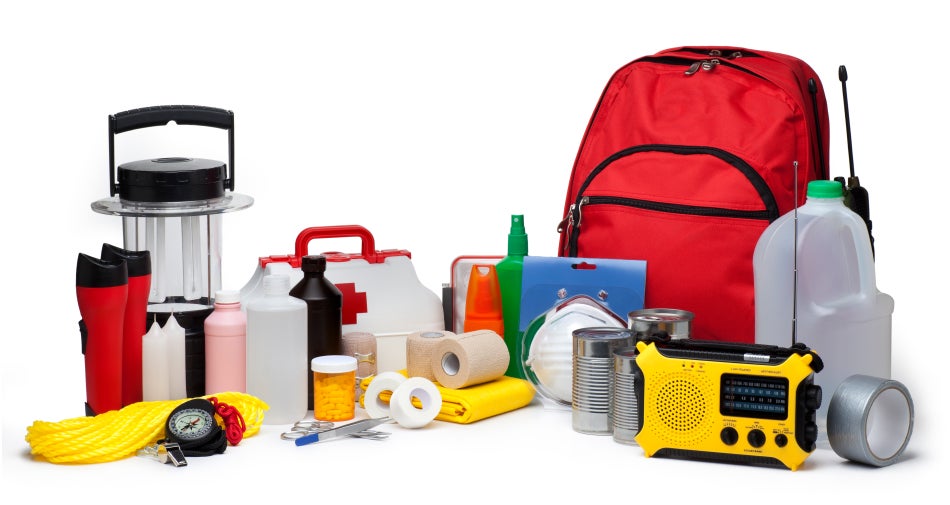Take Control with Emergency Preparedness: Shielding What Matters The Majority Of
Wiki Article
How to Establish a Detailed Emergency Situation Preparedness Strategy
In the realm of readiness, establishing a comprehensive emergency situation plan is not merely a job to mark off a listing; it is an important keystone of any company or person's strength technique. From natural catastrophes to unanticipated situations, the capacity to expect, mitigate, and respond successfully can imply the difference in between disorder and control. By diligently crafting a strategy that deals with numerous aspects of emergency situation administration, including threat analysis, communication protocols, source appropriation, and strategic decision-making, one can lay a solid foundation for safeguarding operations, lives, and properties. The true efficiency of such a strategy exists not only in its production however likewise in its recurring maintenance and adaptation to progressing difficulties and risks.Significance of Emergency Preparedness
Emergency situation readiness is important for minimizing potential risks and guaranteeing the safety and security of people and neighborhoods. In today's world, where all-natural disasters, public health situations, and various other emergencies can strike without warning, being prepared can make a substantial difference in minimizing the impact of these occasions. By having a well-balanced emergency preparedness strategy in position, organizations and individuals can react effectively, secure lives, and lower residential property damages.Among the primary reasons that emergency preparedness is necessary is its duty in saving lives. Having a plan that lays out clear procedures for communication, evacuation, and emergency action can assist individuals act swiftly and emphatically when emergencies occur (go to this web-site). This can protect against injuries and deaths by guaranteeing that individuals understand what steps to take to stay safe
In addition, emergency readiness improves the resilience of areas. By fostering a culture of preparedness and preparation for various scenarios, areas can get better extra swiftly from catastrophes and disruptions. This durability is crucial for maintaining stability, continuity of procedures, and total well-being in the face of hardship.
Assessing Prospective Threats
Considering the significance of being gotten ready for unanticipated occasions, the first action in creating a reliable emergency situation readiness strategy entails extensively evaluating and assessing potential risks. This assessment requires a comprehensive review of all possible hazards that can impact the company, thinking about elements such as area, market, and historical information on cases. By recognizing these threats, companies can prioritize their preparedness efforts and allocate sources successfully to minimize one of the most considerable risks.Common threats that companies might deal with include natural calamities like earthquakes, storms, or floodings, technological threats such as power failures or data violations, in addition to human-caused risks like crashes or deliberate acts of violence. Performing a danger analysis likewise involves taking into consideration the prospective influence of these events on the company's procedures, staff members, clients, and reputation. By performing a comprehensive threat analysis, organizations can create customized emergency feedback strategies that resolve their details susceptabilities and guarantee effective preparedness for any kind of prospective situation.
Creating a Communication Strategy
Developing a extensive and clear interaction plan is important for reliable emergency readiness within organizations. In times of crisis, interaction plays an important role in ensuring the safety and wellness of workers, stakeholders, and the area. A well-balanced interaction strategy should describe clear lines of communication, assign vital employees in charge of interaction jobs, and establish methods for distributing info rapidly and accurately.One trick aspect of developing an interaction plan is determining alternating and primary interaction channels (EMERGENCY PREPAREDNESS). These can consist of e-mail, message messaging, phone trees, social media platforms, and public address systems. It is essential to make sure that these networks are trusted, easily accessible, and consistently examined to ensure their efficiency during emergencies

Source
Structure an Emergency Situation Kit
Provided the critical importance of readiness in times of crisis, a key component that organizations should attend to is the facility of an emergency set. When putting together an emergency package, it is important to take into consideration the particular requirements and conditions of the company. In addition, organizations ought to consist of important documents, such as contact checklists, insurance coverage info, and emergency action plans, in water-proof containers within the set.Developing Emptying Procedures
To guarantee the safety and organized emptying of employees throughout emergencies, organizations need to develop clear and efficient evacuation treatments. Evacuation procedures should encompass a series of prospective circumstances, consisting of fires, all-natural calamities, or other emergencies that need swift emptying.
In addition, companies must establish a system for audit for all workers during an emptying to guarantee that everybody has actually securely left the premises. Interaction plays an important duty in discharge procedures, with clear guidelines on just how to evacuate and when to do so. Routine review and updating of emptying procedures based upon responses and altering situations are necessary to maintaining the effectiveness of the plan.
Final Thought
In final thought, creating a thorough emergency situation readiness strategy is crucial for ensuring the safety and health of individuals in case of a disaster (EMERGENCY PREPAREDNESS). By examining potential threats, developing an interaction plan, developing an emergency situation set, and establishing emptying individuals, organizations and treatments can be better outfitted to respond effectively to emergency situations. It is very important to prioritize readiness initiatives to reduce the impact of disasters and shield lives and homeIn the world of preparedness, developing a detailed emergency plan is not merely a job to inspect off a checklist; it is an essential keystone of any type of organization or person's resilience method. When emergencies happen, having a plan that outlines clear treatments for emergency, emptying, and communication reaction can aid individuals act promptly and decisively. visit site. By performing a comprehensive risk assessment, companies can develop customized emergency situation feedback plans that resolve their details susceptabilities and make certain effective preparedness for any potential situation
Creating a clear and comprehensive communication strategy is crucial for efficient emergency situation readiness within organizations. By assessing possible risks, producing a communication plan, developing an emergency situation package, and establishing emptying procedures, organizations and people can be better geared up to respond efficiently to emergencies.
Report this wiki page